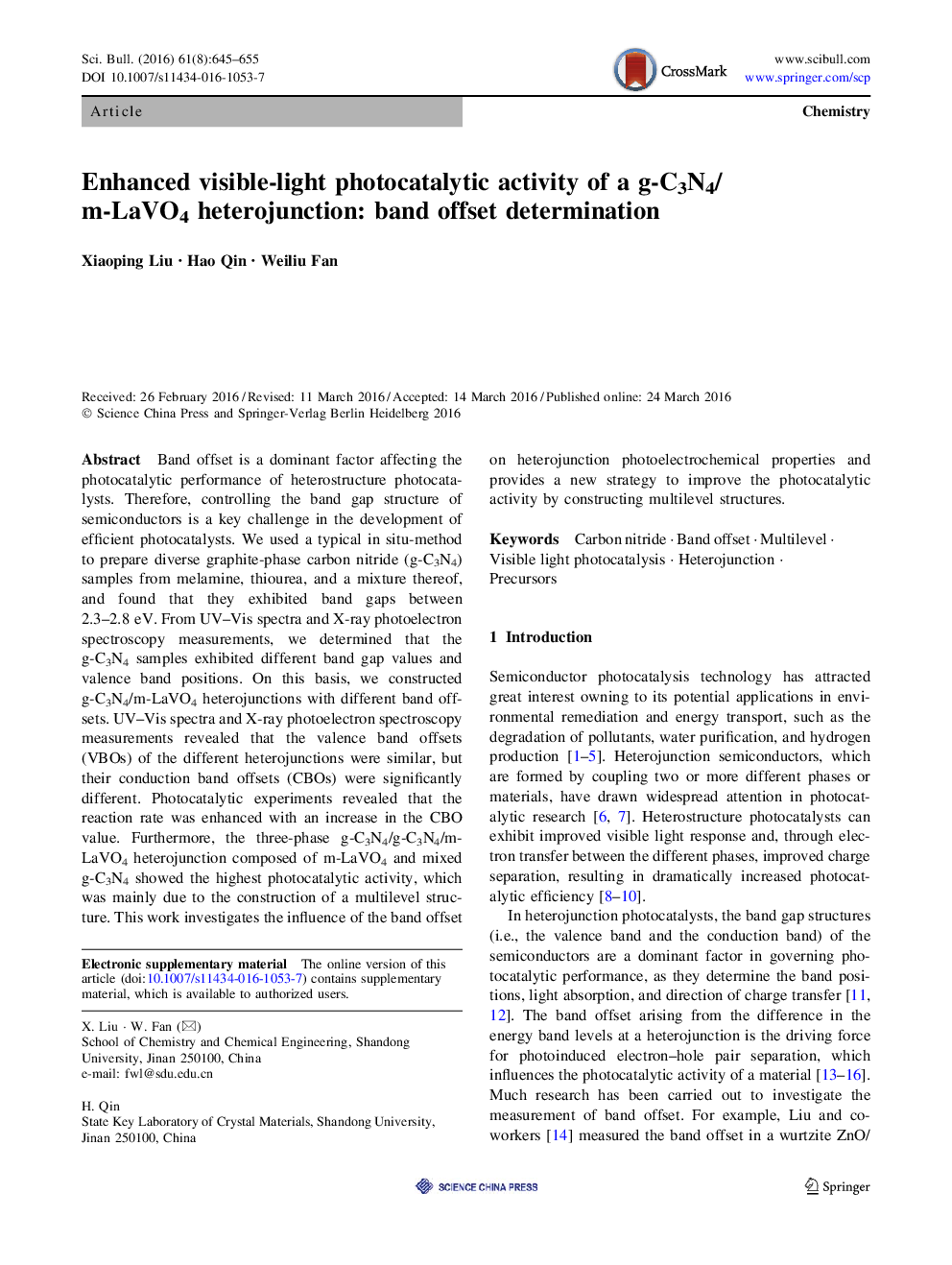| Article ID | Journal | Published Year | Pages | File Type |
|---|---|---|---|---|
| 5788894 | Science Bulletin | 2016 | 11 Pages |
Band offset is a dominant factor affecting the photocatalytic performance of heterostructure photocatalysts. Therefore, controlling the band gap structure of semiconductors is a key challenge in the development of efficient photocatalysts. We used a typical in situ-method to prepare diverse graphite-phase carbon nitride (g-C3N4) samples from melamine, thiourea, and a mixture thereof, and found that they exhibited band gaps between 2.3-2.8Â eV. From UV-Vis spectra and X-ray photoelectron spectroscopy measurements, we determined that the g-C3N4 samples exhibited different band gap values and valence band positions. On this basis, we constructed g-C3N4/m-LaVO4 heterojunctions with different band offsets. UV-Vis spectra and X-ray photoelectron spectroscopy measurements revealed that the valence band offsets (VBOs) of the different heterojunctions were similar, but their conduction band offsets (CBOs) were significantly different. Photocatalytic experiments revealed that the reaction rate was enhanced with an increase in the CBO value. Furthermore, the three-phase g-C3N4/g-C3N4/m-LaVO4 heterojunction composed of m-LaVO4 and mixed g-C3N4 showed the highest photocatalytic activity, which was mainly due to the construction of a multilevel structure. This work investigates the influence of the band offset on heterojunction photoelectrochemical properties and provides a new strategy to improve the photocatalytic activity by constructing multilevel structures.
